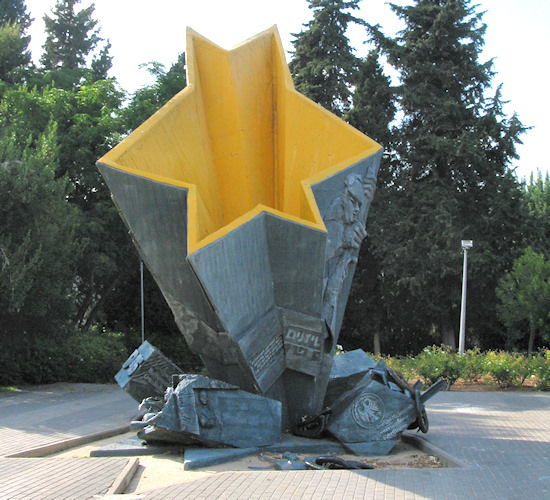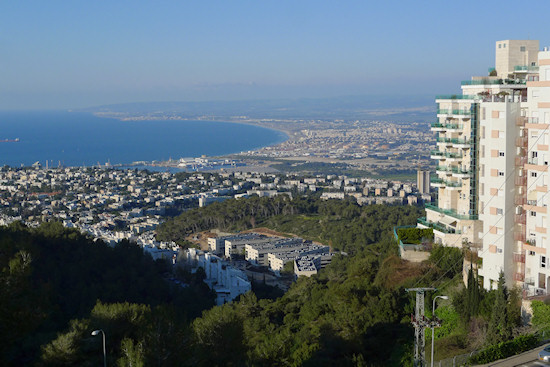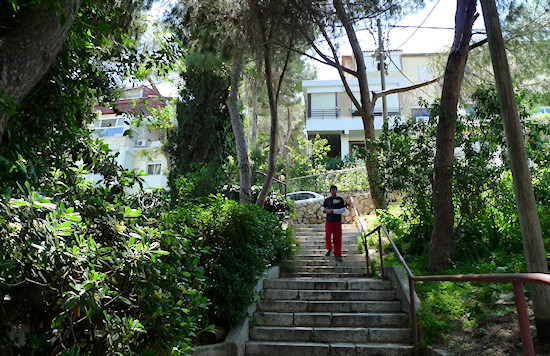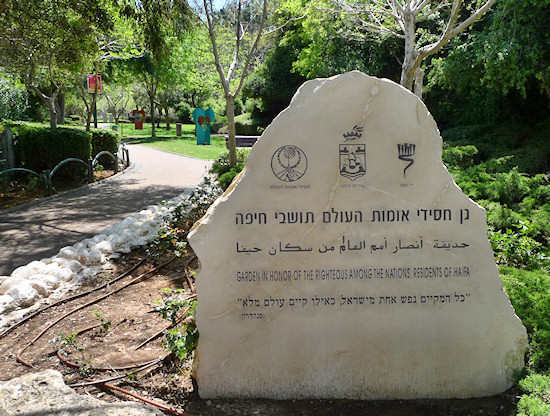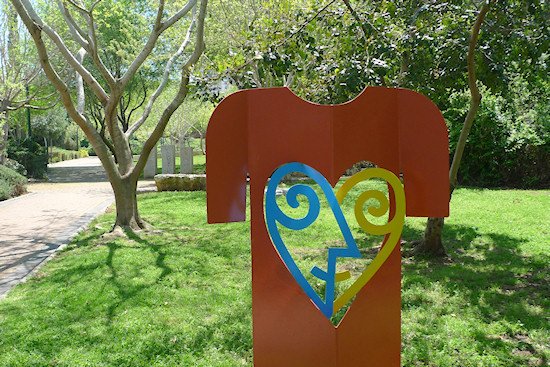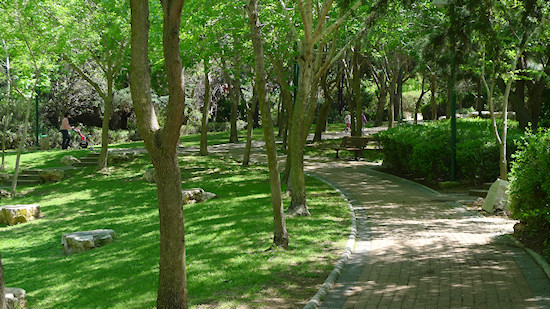Section 8: Ramot Remez and Ramat Allon – War heritage, Gardens and Views | 3.8 Km
Starting point: Mallal St., Technion Entrance | 212m above sea level
Ending point: Aba Hushi Blvd., Junction of Haifa University north entrance | 440m above sea level
In this section, you will continue to climb in the Carmel, while passing through some more interesting areas.
Exit the gate of the Technion on Mallal St and go onto the upward, unconstructed side of the pavement. Before the bus stop, turn left on a stairway that leads up to an open barren area. To the left, you see a verdant area, within which is hidden an archaeological site.
The place was originally called “arak a ziayn” and in Hebrew it is more widely known as “wall of the crows”. Here, there was once an ancient road that connected Shikmona to Huseifa (today’s Isfiya). There is evidence here of pre-historic settlement along with remnants of a large structure that was apparently an agricultural site dating from the Hellenistic period.
Continue ascending through the open area until Meir Yaari St. Later, on the left side, you can see a cliff pocked with niches, which contained some of the site’s findings.
Descend on Meir Yaari St. to the junction with the traffic light at Mallal St. Cross Mallal St. and the continuation of Meir Yaari, which becomes Comoy St.
From the left (south) of Comoy 28, you view a path between the houses that leads us to Borochov Park. You are now surrounded by low-standing houses, built at the end of the 1940’s and beginning of the 1950’s. All these houses had two storeys, two apartments to a floor and red roofs. Over the years, many of these houses were renovated and expanded, and it is now difficult to sense the original country-style atmosphere. The area, however, is still called “neighborhood of the red roofs”, and is considered part of the Ramot Remez neighborhood.
The north side of the neighborhood began in the 1940’s as a housing complex for long-time employees of the Histadrut (Israel's organization of trade unions). Each home was 45 square meters in size. You are now in a housing complex for career soldiers, who were “priviledged” to receive “extra-spacious” 65 square-meter apartments.
From Borochov Park, turn onto a path that continues upward to Borochov St. The path continues on to the stairway from the right (north) side to Borochov 20, crosses Halamed-He Blvd. and arrives at Dorot St. This is another place in Haifa in which one can feel the village within the city. On Dorot St. turn right and connect with International St.
It is not by chance this street, named for the global organization of workers worldwide, is located here. Aba Hushi, Haifa’s mythical mayor, suggested the street be named “International” and given an English pronunciation. This would serve as a tribute to the US workers’ organization leaders, who had visited the city that year, and made donations to it.
Cross International St., turn left (south) on it, pass Haviva Reik St., and enter right into a large public garden. The garden is dedicated to Jewish fighters during WWII, and is named “Garden of the Partisans”. In the center of the garden is a special monument, designed by the Haifa artist Gershon Knispel. On one side, it looks like a prism breaking forth from a wave of sooty stones, on which are images from the Jewish struggle during the Holocaust. A view from the other side reveals that the prism is cut in the shape of a “Magen David”, mimicking the yellow star that Jews were forced to wear. Benches sit next to the monument, and nearby is a children’s playground.
Return to International St., continue a little way south and turn left (east) at the traffic light to Meir Yaari St. After a gentle descent turn right (south) to Igal Allon St. where you enter Ramat Allon, one of Haifa’s relatively new neighborhoods. After about 100 meters, Igal Allon St. turns left and you continue straight into a public garden.
The garden’s modest entrance disguises its size. Continue upward, along the long garden. Recently, this garden was consecrated as “Garden of the Righteous Haifa Residents”. It is dedicated to the 18 righteous people who saved Jews from the Nazis and came to live in Haifa. Some of these people married survivors, who they had hidden and saved, and came to Israel together with them. Others arrived in Israel over the years to aid the survivors. The garden contains 18 spots, which tell the story of the righteous individuals. In the middle of the garden sits the “Garden of the Children of Eternity”, which is suitable for families and youngsters.
Exit from the other side, the southern side, where the garden ends in a stairway that takes us to Alter St. Cross Alter St. and continue on the stairway and the shaded path that brings us to the other side of Alter St., which is shaped like a horseshoe. Turn right on Alter, and again right to Igal Allon St. Continue down the street to the neighborhood shopping center, where one can find refreshments.
Afterwards, continue on Igal Allon st. and connect left to Arthur Biram St., named for the legendary principal of the Reali School, one of the leading educational institutions in Haifa. We stay on the sidewalk on the side of Igal Allon St. and as you ascend, you get closer to the water divide of the Carmel ridge. Before the end of the road’s sharp curve, turn left to a stairway that brings us to Hakhsharat Hayishuv St. Take this street eastward until you reach a traffic circle, where you turn into Eliahu Orbach St. Continue southeast, which leads by ramp to the junction of Aba Hushi Blvd. and Oskar Schindler St. on the water divide. Cross Oskar Schindler and continue upward on Aba Hushi Blvd. At the next junction, turn into the University of Haifa and conclude this section.
